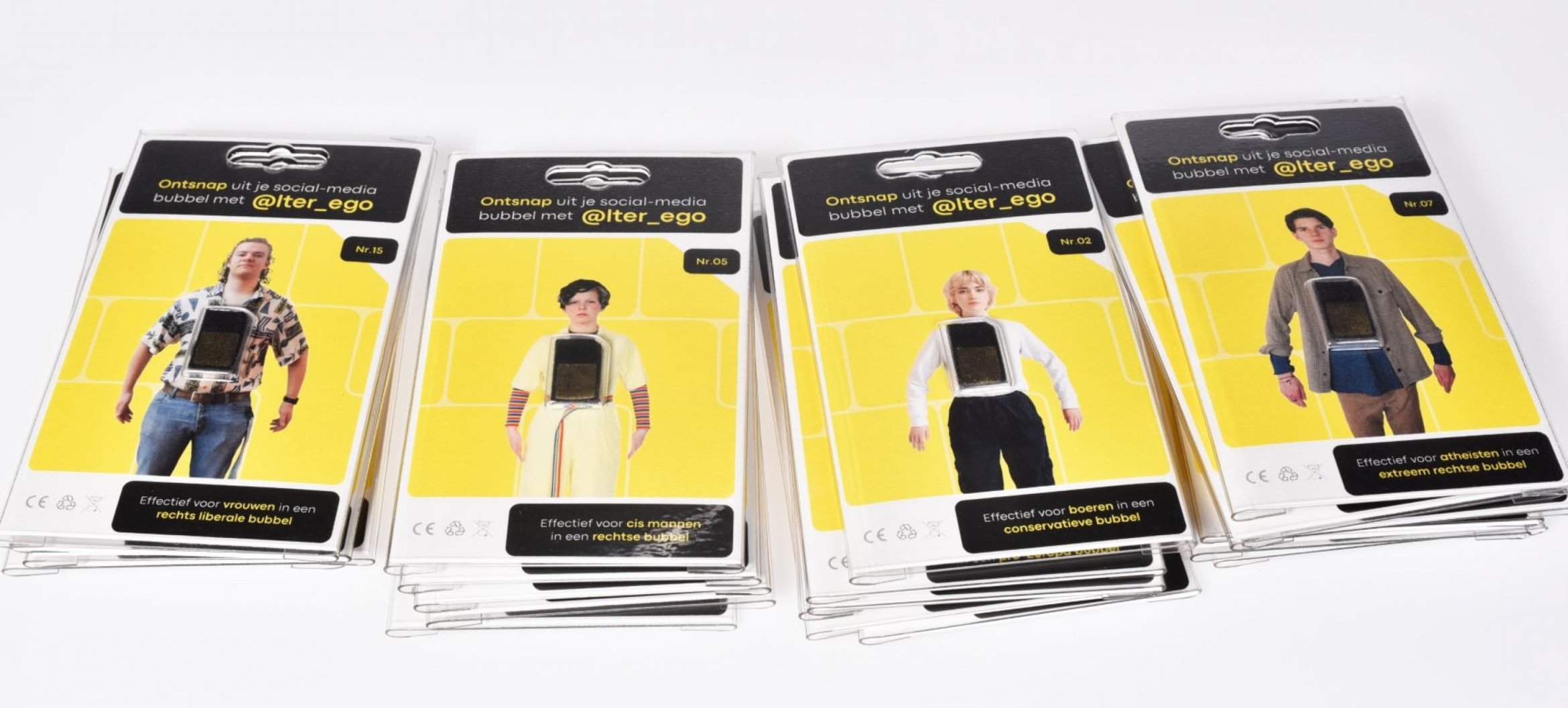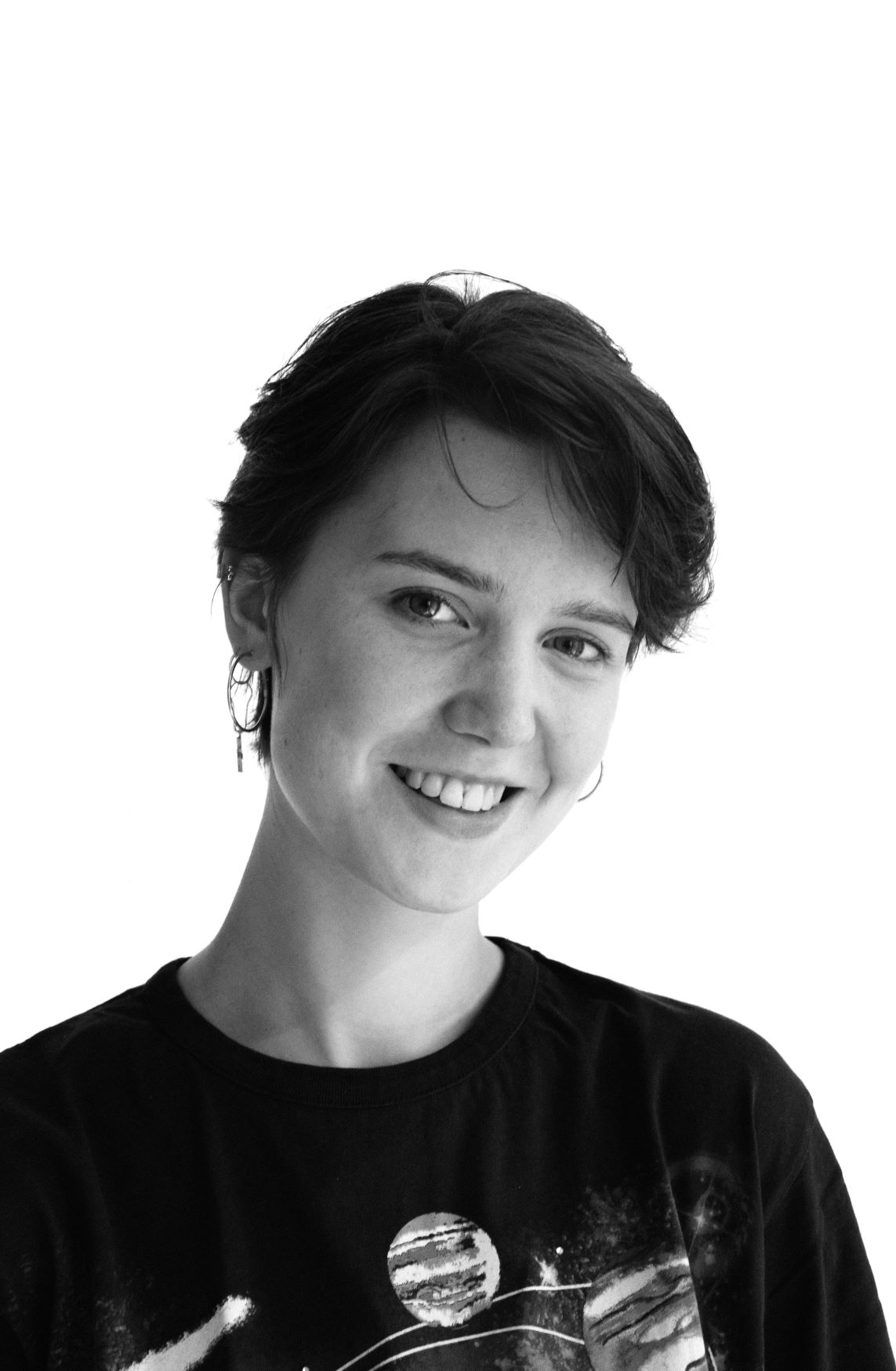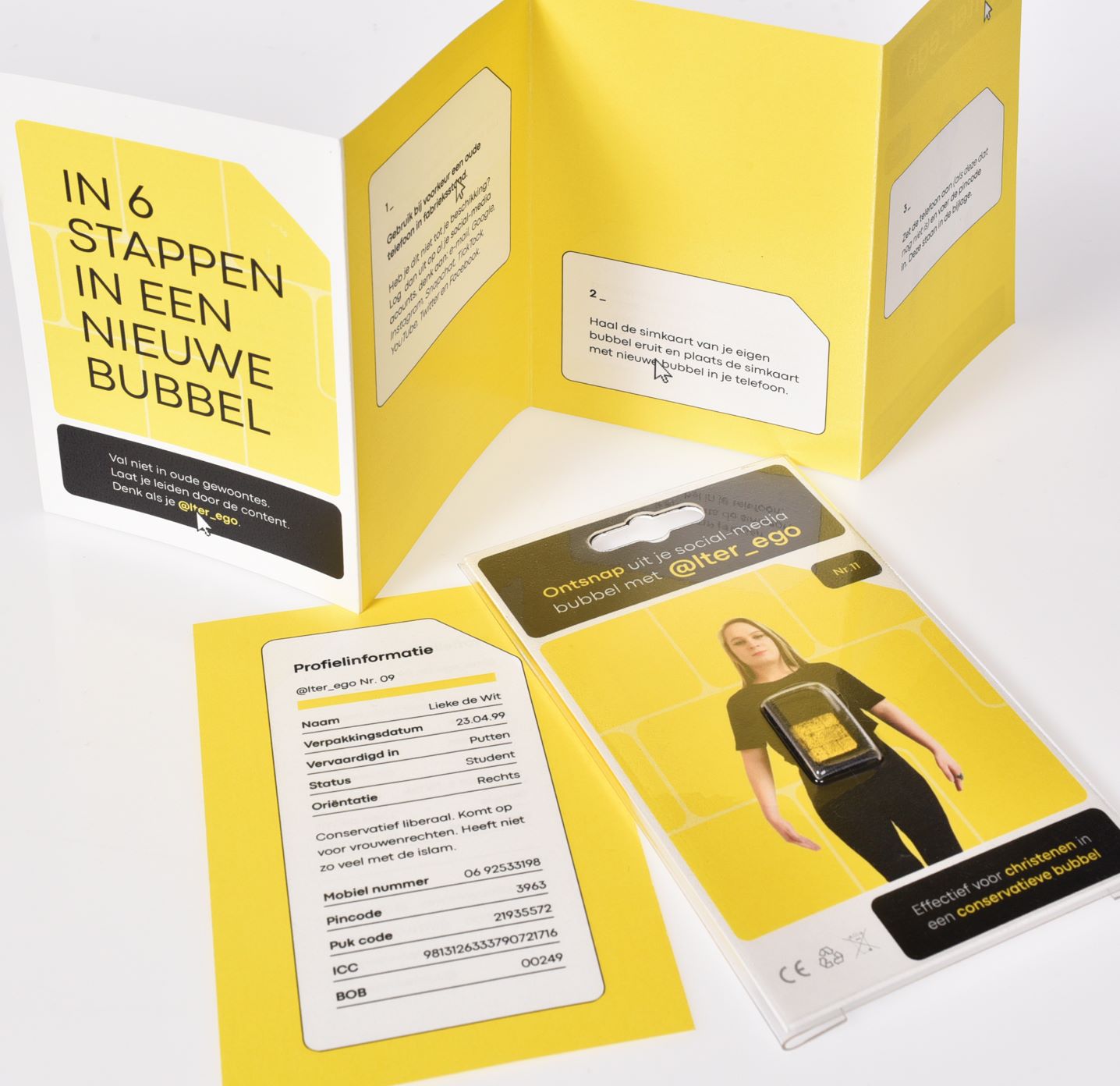Prick your social media bubble with @lter_ego
You’re not likely to catch Marit Reezigt making an ill-considered choice. If she needs to take a decision about something, she does her research. So much so that her lecturers on the Graphic Design course in Zwolle sometimes had to pull her out of her research phase: “They’d say: ‘Marit, don’t spend too long on your research, it needs to lead to something’. But I just found the research so interesting.”

She was like that at secondary school. Marit was preoccupied with art even then. In her third year she realised that art studies extends beyond just painting. “At that point, I started researching graphic design as a discipline. I loved it right from the start, especially because there are so many different directions you can go in. You can go into film, but you can also design things on a computer or even by hand. To see whether it really suited me, I enrolled on the Art & Design Preparatory Course in Zwolle. You could do it as part of secondary school.” Nothing ill-considered about that, then. And before committing herself, Marit spent hours on Google looking into what graphic design involves. “If you look it up online, you don’t really get a sense of how artistically significant the discipline is, although it certainly is.” The combination of the artistic side and the more practical side of design clinched it for her.
More focused and more applied
After all that research, she was clear that she wanted to do Graphic Design and not Illustration Design, for example. “During the preparatory course, I realised that illustration is much more about the story, whereas in Graphic Design you think about how you can tell that story as clearly as possible, so that people understand it straight away. Graphic Design is a lot more focused and much more applied. It’s more about form, typography, use of colour.” Deciding to study in Zwolle was not a difficult choice either. “When I started the course, I had just turned 17. Going to Arnhem to do the course felt like too big a step, especially because they teach in English. I find it easier to express myself in my own language, which means I can learn more. Plus I was born in Zwolle and the course here is on a slightly smaller scale.”

Taking the initiative
The course seemed designed especially for Marit – because the start of each semester is devoted to research. “We started with a theme, for example ‘ode’. Then we had to think of a subject to go with it – I chose ADD, an ode to chaos – and then you research that in every subject. In typography, you learn the basic skills (spacing, for example), but you are also told to go out on the street to look for typography, to experience a poster in that setting.” Marit found it all interesting. What she also liked was the independence. “You have to find the lecturer yourself to tell them what you are working on. That’s good preparation for the future, because you’ll have to take the initiative yourself then too.”
A complete human being in a packaging
After years of research and design, Marit started on her graduation project. She already knew what the design would be. “For years I’ve been fascinated by why people become polarised, how extreme opinions arise. My profile project at secondary school was about the Cold War and propaganda. During the pandemic, I could feel the sense of them and us growing. Everyone was sat at home at their laptops and it’s very easy to become radicalised via the internet.” Marit designed @lter_ego, twenty packagings each containing a ‘complete human being’. On the back are the product specifications, comprising the name, the packaging date (date of birth) and the bubble that person is in. If you want to step out of your bubble and experience what another person’s world looks like, you will find a SIM card in the packaging and you can scroll through that person’s social media profiles and their timeline. “You can then experience how that person sees the world. Hopefully afterwards you’ll understand why they think the way they do.”

Deep dive into Facebook en Twitter
For instance, one profile is extremely effective for cis* men in a right-wing bubble, whereas another works well for woke** women in an lgbtq+ bubble. Marit’s research consisted of a deep dive into Facebook and Twitter, where she adopted an alter ego and clicked on videos to see how that would shape her internet experience. “I typed in Thierry Baudet and clicked through to other right-wing videos I had never seen before. Even my search results in Google changed. So I was pretty much steered and manipulated in my own bubble.”
Collaborating with researchers
What Marit hoped to achieve through her project was to encourage people to do more research of their own. “Try creating another Facebook profile, set your YouTube account to private mode and see where you end up. It is especially young people today, those aged between 18-30, who are a bit more flexible and are more likely to be drawn to the extremes. It would be great if they were to step out of their bubbles now and then.” And what does Marit want for herself? It will come as no surprise that after her course, Marit wants to do more research. “I’d really like to collaborate with researchers. I’d help them publicise their projects, do the communication side. But first she wants to take a gap year, or maybe do a master degree in Eindhoven. Marit isn’t yet sure: “I need to do some research first!”
Follow Marit
Website @lter_ego
Website Marit
Instagram
LinkedIn
Marit’s work, and that of the other graduates from ArtEZ Art & Design Zwolle, is on display from 1 to 11 July 2021 during the finals exhibition of the Academy of Art & Design in the Grote Kerk in Zwolle. You can read more about it here.
*A cisgender is someone whose gender identity corresponds to their birth sex.
**Woke is a term that refers to being aware of and alert to inequalities in society.


